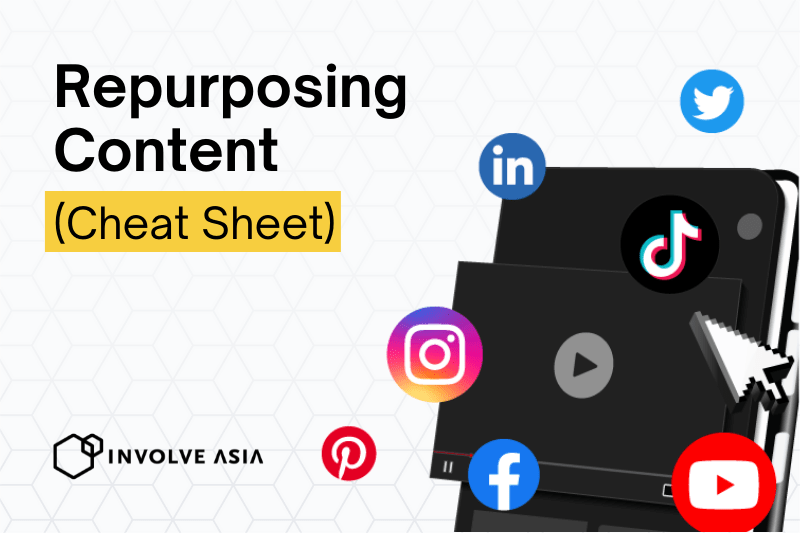The minds behind Involve Asia share their thoughts on how affiliate marketing and verticals will take shape in 2024. Here’s what they said.
Brands will leverage affiliate marketing to drive credibility and results to their own e-commerce stores

There is a lot of uncertainty and turbulence in the marketplaces, especially with the layoffs and restructuring that has been going on for the past few months. Many brands in Southeast Asia and Malaysia in particular rely heavily on marketplaces for e-commerce revenue. With marketplaces going through change, I think one of the trends to watch is brands saying, “Hey, we cannot put all our eggs in one basket.” Brands will begin to push their own e-commerce sites and will need to start leveraging affiliate marketing to drive credibility and results.
With affiliate marketing, because of how it’s been described in the past, brands assume they can implement it and immediately drive sales. But the fact is that affiliate marketing isn’t an effective tactical tool. You have to work on it, and you have to invest in it. In 2024, brands will start to understand more clearly how affiliate marketing actually works and begin to allocate budgets to build up their relationships with affiliate partners.
They need to focus on the lifetime value of an affiliate. In the context of campaigns for affiliate marketing, we need to look beyond just clicks and conversions. Acquiring affiliates should be an ongoing process with an emphasis on what the affiliate has done to generate sales or a desired action over a 12 or 24-month period. How much does each of these cohorts contribute yearly?
If brands want affiliates to promote them, they need to pitch them with campaigns to get more partners to join the affiliate program and pick up the products to promote. Brands will inevitably realise that their own e-commerce store is very different from marketplaces or their physical locations. Partners need to know what the top-selling products are and not just the benefits of shopping on a particular brand’s site. At the core of it, we need to give partners more information, the same way we train sales representatives in-store.
Brands will have to aggressively educate partners by providing valuable content on various platforms like YouTube and LinkedIn. When brands start to consider specific partners to collaborate with, they should provide access to the same kind of information as they do to the sales consultant.
If that content from training is digitised and made available for partners, they will be more equipped to promote the products. Today, affiliate partners are expected to research and write content. Simplifying this access to information will encourage more to participate.
Brands will endeavor to be in the conversations with the communities while walking a mile in their shoes. This includes joining platforms where these potential partners communicate with each other and get them to join as affiliates.
Working together with untapped affiliate partners to overcome long-term challenges

Acquiring various affiliate partners based on the brands’ business goals and requirements is challenging. The question is what kind of affiliate partners work best, and where to get ample affiliate partners to scale up a brand’s affiliate program.
With Influencers, the challenge for brands is how do they make their own affiliate program attractive, from the perspective of revenue generation ability, versus cost effectiveness – paid partnership or affiliate programs. What we’re seeing is that the amount produced per post by the top social influencers via affiliate marketing can vary greatly between different brands they promote.
There are a lot of factors to consider, such as the trustworthiness of the brand from consumers’ perspectives and how likely a user will buy the same brand’s product from one online store or a marketplace. New brands looking to tap into influencers with an affiliate marketing program will need to consider if their affiliate program is attractive to the influencers who are already generating high earnings from marketplace affiliate programs that carry the same products.
Influencers are also now looking at content creation for short-form videos and live-streaming, which aligns with users’ preferences across different markets – but are more time consuming to produce and, hence, are priced at a premium to brands. However, they are now starting to use the latest social media platform features and AI to help them create content that increases their productivity, such as creating scripts and editing videos from scratch, opening up more avenues for them to look into doing more with affiliate marketing.
Non-influencers (such as Content, Coupons, Media Buyers, and Rewards) on the other hand have more ability to promote, with the resources to automate some of their processes and drive their return on investment (ROI) performance across more brands than influencers typically can. There is more longevity when they promote the brands’ deals, and bring to the table different value propositions for brands to meet the different goals they have
As for affiliate partners new to affiliate marketing, they require intensive education to learn how to elevate their strategies in promoting brands’ products and services. Not only via digitised training content, but having actual people to guide them through their affiliate marketing journey also matters. Innovative tools and insights – both from their own performance and their peers – can help them simplify, streamline and optimise their promotional efforts. These affiliate marketing tracking tools will help affiliate partners identify the customers’ journeys across brands and capture conversion insights, leading to further strategic promotion decisions that bring better results.
Tracking & AI technologies will go hand-in-hand with stricter regulations

In 2024, affiliate marketing is undergoing some exciting changes, especially in how we track conversions. With the rise of privacy concerns and changes to browser policies, traditional cookie-based tracking methods are becoming less reliable. But fear not, because new cookieless tracking solutions are approaching the plate. These innovative technologies use alternative methods like server-to-server tracking, device fingerprinting, and first-party data to accurately track conversions without relying on cookies. This means brands can still measure campaign success while respecting user privacy.
But that’s not all – artificial intelligence (AI) is revolutionizing conversion tracking in affiliate marketing. AI-powered conversion prediction algorithms analyze massive amounts of data to predict which users are most likely to convert. By understanding user behavior patterns and preferences, brands can tailor their campaigns for maximum effectiveness. This predictive power enables smarter decision-making and more personalized marketing strategies.
Additionally, cross-device tracking innovation is gaining traction in 2024. With people using multiple devices throughout their customer journey, it’s crucial to track interactions across all platforms seamlessly. Advanced cross-device tracking technologies ensure that conversions are properly attributed, regardless of the device used. This holistic view of the customer journey allows brands to better understand user behavior and optimize their campaigns accordingly.
Finally, privacy-centric tracking solutions are becoming increasingly important in affiliate marketing. With stricter privacy regulations in place, brands need to prioritize user consent and data protection. Privacy-centric tracking solutions prioritize ethical data practices while still providing valuable insights into campaign performance. By adopting these privacy-centric approaches, brands can build trust with consumers and maintain compliance with regulations.
In summary, 2024 is an exciting time for affiliate marketing, with advancements in conversion tracking mechanisms paving the way for more effective and ethical marketing strategies. As cookieless tracking solutions, AI-powered prediction, cross-device tracking, and privacy-centric approaches take center stage, brands have the tools they need to navigate the evolving digital landscape while respecting user privacy and delivering personalized experiences.
First-party data will be the source of raw information to identify return of ad spend (ROAS)

The trend in marketing and advertising has undergone significant shifts as the pandemic has subsided, the era of “cheap money” in the market also comes to an end, with central banks globally raising interest rates to combat inflation, resulting in an economic slowdown across the globe.
In response, many companies are increasingly adopting a more prudent approach, prioritized return on ad spending (ROAS) in their marketing and advertising strategies. This trend notably favors affiliate marketing due to its performance-based nature and transparent returns in contrast to Pay Per Click programs.
Another trend in the marketing space is the utilization of data to drive sales, yet simultaneously, consumers are becoming more vigilant about the privacy of their personal data. Prior to the Cambridge Analytica scandal and subsequent privacy movements by consumers, a 2018 study by Ghostery revealed that over 20% of the top 500 websites had 50 or more trackers.
These trackers employ various technologies such as third-party cookies, fingerprinting, and device identifiers to track users across the web and apps, posing a threat to users’ privacy.
Such trackers can access highly personal information, enabling conclusions to be drawn not only about an individual’s financial situation, interests, and shopping plans but also about their sexual orientation, health, political views, and religious beliefs.
An emerging trend to watch closely is Artificial Intelligence (AI), spurred by a breakthrough from researchers at Google in their paper “Attention is All You Need,” which outlines an innovative method for training large-scale machine learning models. OpenAI notably became one of the first companies to successfully implement this technique, training an AI model with data from nearly the entire web and deploying the consumer AI application ChatGPT, capable of understanding advanced human language patterns.
Currently, in Silicon Valley, tech giants are intensifying competition and investing billions of dollars into AI research, aiming to be the first to achieve the new frontier known as General Artificial Intelligence (GAI). This technology is poised to significantly impact the marketing and advertising space as it integrates into new user behaviors, particularly in automation and content creation.
With AI models like Midjourney and DALL·E, marketers now have improved accessibility to creative tools, while ChatGPT aids in generating ideas and proofreading copywriting, effectively becoming a co-pilot alongside humans.
Now that you have heard from our experts, we hope that you are inspired to pivot & upscale your strategies within the innovative affiliate marketing landscape.
Ready to kickstart your affiliate marketing journey in 2024? Click below to join Involve as Brand, and our team will reach out to you to discuss further about your business growth.







